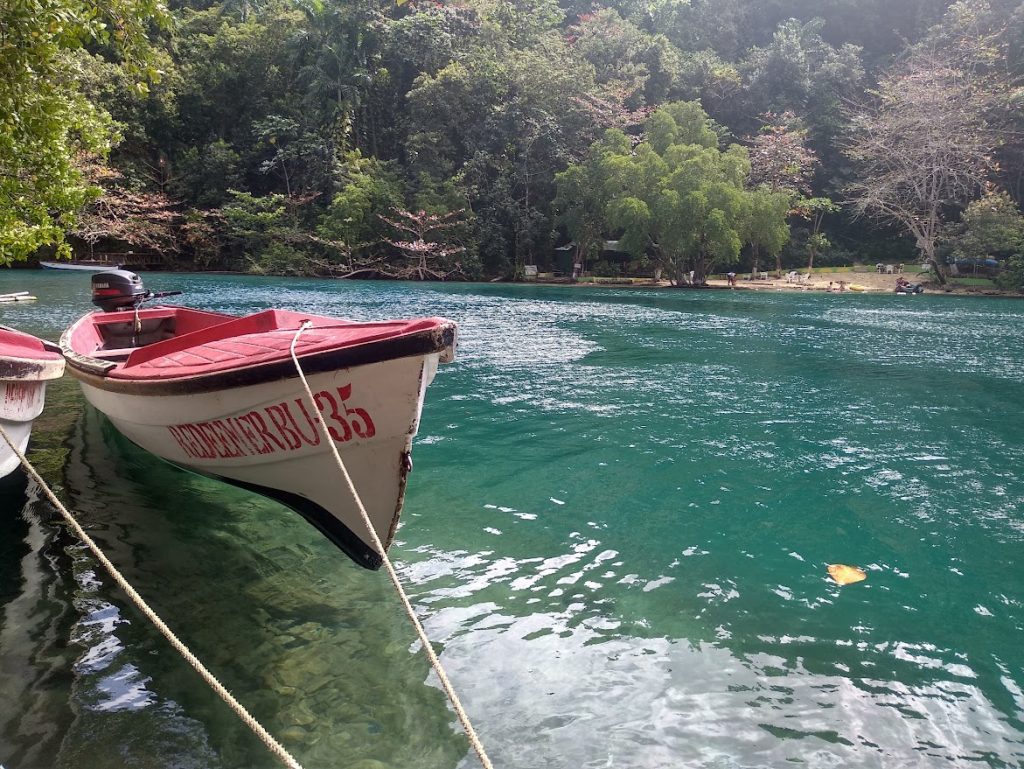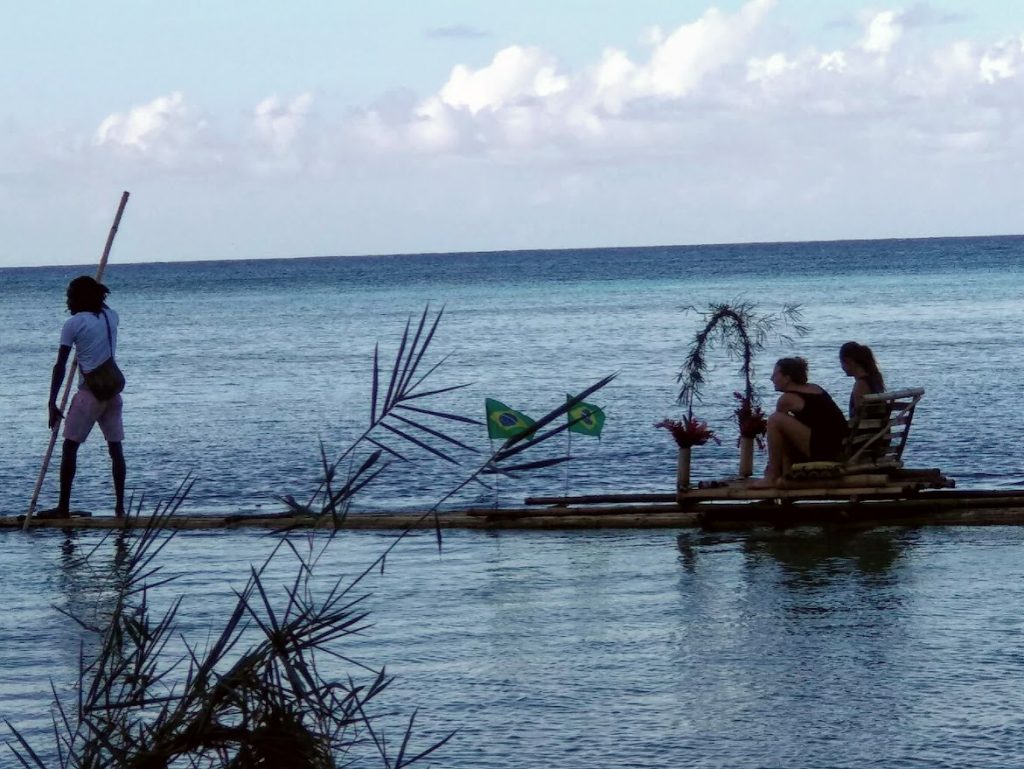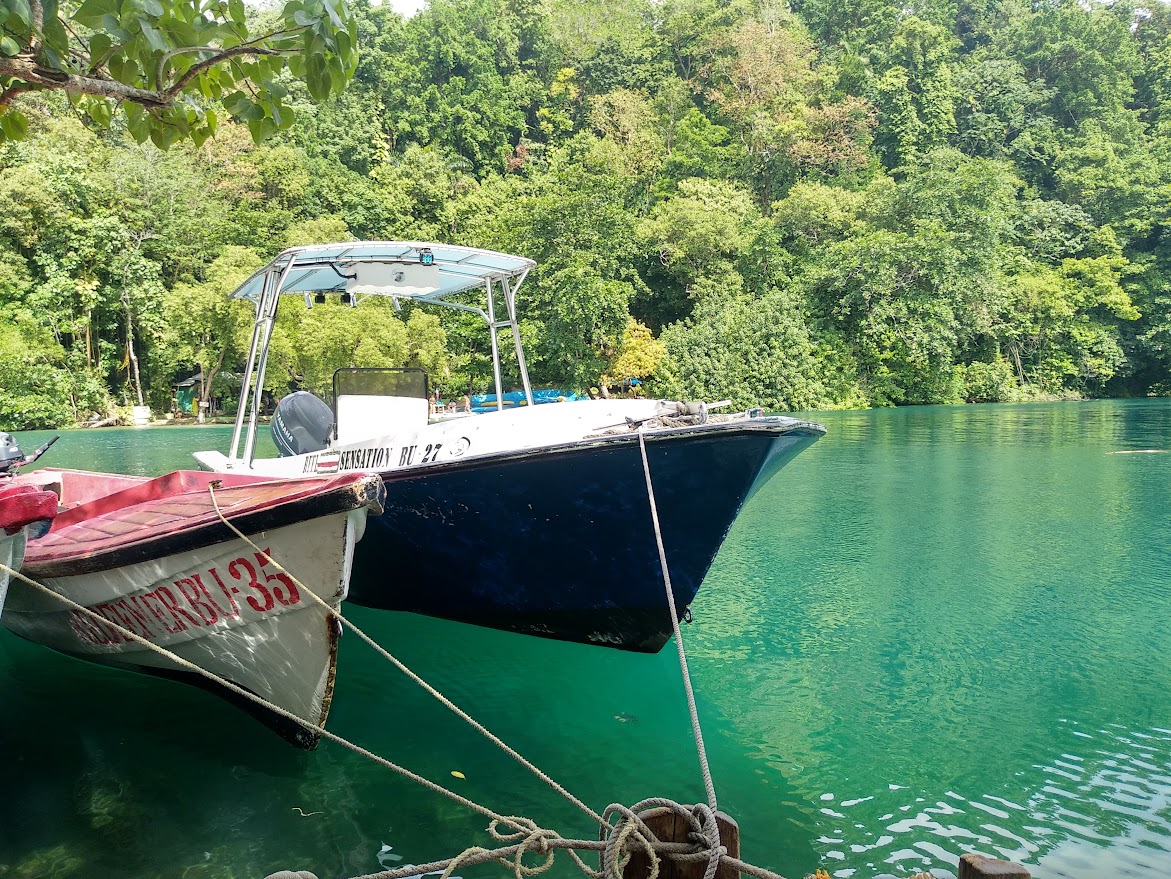Jamaica’s Blue Lagoon is not just a stunning natural wonder; it’s also a famed cinematic location, immortalized by the 1980 film “The Blue Lagoon.” As you explore the Blue Lagoon’s lush surroundings, you’ll be walking in the footsteps of the characters played by Brooke Shields and Christopher Atkins. The vivid turquoise waters of the lagoon provide a vibrant backdrop that effortlessly captures the imagination, demonstrating why a story of romance and adventure chose this location.
Understanding the current visitor experience is important for planning your visit. An entrance fee is required to access the Blue Lagoon in Jamaica, which goes towards the maintenance and preservation of this natural attraction. The costs can vary, so it’s wise to check the latest fees before you go. Beyond the enchanting waters, the area boasts luxurious villas, providing an exclusive escape for those looking to immerse themselves in the movie’s idyllic setting.
The Blue Lagoon is not only a movie set but a destination offering serene beauty and relaxation. Whether you choose to simply soak in the tranquil waters, dine in nearby eateries, or stay in one of the opulent villas dotting the coastline, the blend of cinematic history and natural allure at the Blue Lagoon awaits your discovery.
Overview of the ‘Blue Lagoon’ Movie
Randal Kleiser’s 1980 film “The Blue Lagoon” gained fame for its stunning scenery and captivating tale of two children, Emmeline and Richard, who find themselves stranded on a tropical island in the South Pacific. As you grow up within the film’s narrative, you witness the characters develop and adapt to their isolated environment, forging a unique life for themselves away from civilization.
Cast:
- Brooke Shields as Emmeline
- Christopher Atkins as Richard
Genre: Adventure, Drama, Romance
Distinguished by its lush tropical settings, “The Blue Lagoon” introduces you to the deep contrasts between innocent childhood and burgeoning adulthood. The film navigates through themes of survival, natural beauty, and human discovery.
Filming Locations:
- Primarily filmed in Jamaica, showcasing the island’s exquisite landscapes.
The Blue Lagoon, a tourist destination in Jamaica, is portrayed as a haven of crystal-clear waters and vibrant marine life, encapsulating the essence of an untouched paradise.
Critical Reception: While the movie elicited mixed reviews from critics upon its release, it has garnered a certain cult following due to its striking visuals and the thematic exploration of human nature in solitude.
The Blue Lagoon in Jamaica holds historical significance.
The Blue Lagoon in Jamaica is a natural wonder steeped in history and lore. Once called the “Blue Hole,” it gained popularity in the 1980s through the film “The Blue Lagoon.”
Cultural Impact:
- Associated with romance and adventure
- Highlighted in popular culture, especially after the 1980 film
- It attracts numerous tourists seeking to experience its cinematic history.
Before the movie, the Blue Lagoon had its place in local legends. It was believed to be bottomless and a haunt for the mythical dragon-like creature, the Lusca.
Historical Facts:
- The mixture of fresh and saltwater gives it its unique deep blue color.
- Said to vary in depth due to underwater caverns, with estimates of around 180–200 feet
Your visit offers a chance to immerse yourself in the rich tapestry of stories surrounding this site. During the 20th century, it transformed from a secluded, mystical pool into a must-see tourist attraction.
Local Economy:
- Boosted by the influx of visitors
- Supports businesses like tour operators and hospitality services.
Surrounding the Blue Lagoon, you’ll find exquisite villas that blend luxury with Jamaican charm. These accommodations tap into the heritage of the location, seeking to give you a historically enriching stay.
As you explore the Blue Lagoon, remember that its progression from an enigmatic natural phenomenon to a celebrated cinematic icon has forever woven it into Jamaica’s historical fabric.
Jamaica’s Blue Lagoon serves as a popular tourist attraction.

If you’re planning a trip to Jamaica, the Blue Lagoon is a must-visit destination known for its stunning emerald green and deep blue waters, popularized by the eponymous 1980 film.
Entrance Fee
- Adults: $10
- Children (ages 4–11): $5
- Children (under 4): Free
Note: Prices are in USD and are subject to change.
Operating Hours
- Monday through Sunday: 9:00 a.m.–5:00 p.m.
- Holidays may vary; check in advance.
Exploring Blue Lagoon Movie Locations in Jamaica
The Blue Lagoon in Jamaica is not just a tropical paradise; it’s also famous for being the backdrop of the 1980 romance adventure film “The Blue Lagoon.” As you journey to the northeastern side of the island, you’ll find this natural wonder in Port Antonio, surrounded by lush greenery and the azure waters that make it a popular tourist attraction.
The Main Attraction:
- The deep blue waters of the Blue Lagoon, a stunning natural pool, are believed to change color throughout the day. The area offers a spectacular view that closely resembles the one you saw in the movie.
Nearby movie locations:
- Monk’s Caves: Located close to the Blue Lagoon, which served as a filming site for some of the movie’s memorable scenes,
- Pellew Island is a small island off the coast, offering pristine beaches and an off-the-beaten-path experience reminiscent of the film’s deserted island setting.
Visiting Tips:
- Hours: Typically open from sunrise to sunset for visitors.
- Activities: Engage in swimming, snorkeling, or even take a boat tour to fully immerse yourself in the scenery.
- Access: A fee is required for entry or for guided tours, reflecting the upkeep and preservation of the area.
Experience a piece of cinematic history and the beauty of Jamaica’s famed waters at the same time. Whether you’re looking to relive scenes from “The Blue Lagoon” or simply soak in the idyllic environment, this iconic location promises a memorable adventure.
Accommodation Near the Blue Lagoon
When you plan your visit to Jamaica’s Blue Lagoon, selecting the right accommodation enhances your experience. Choose from exclusive villas with breathtaking views or find a cost-effective option that suits your budget.
Blue Lagoon Villas
While exploring the natural beauty of the Blue Lagoon, you can stay at one of the nearby luxury villas. These villas offer privacy and comfort, with easy access to the water. Some notable options include:
- Blue Lagoon Luxury Villa: Offering stunning lagoon views, private docks, and fully serviced facilities.
- Coral Cove Villa: Nestled on the coast, Coral Cove combines modern amenities with a serene beachfront location.
Each villa comes fully furnished, often featuring private pools, landscaped gardens, and housekeeping services.
Cost of Staying
The cost of staying near the Blue Lagoon can vary greatly depending on the time of year and the type of accommodation you select. Below is a general breakdown:
- Luxury Villas: Starting from $350 to over $2,000 per night, depending on amenities and location.
- Standard Accommodations: Ranging from $100 to $250 per night, they provide more budget-friendly alternatives without sacrificing comfort.
Always check for the latest prices and availability, as these can change and may be subject to seasonal variations.
A visit to the Blue Lagoon
The Blue Lagoon in Jamaica is a place of serene beauty with lush surroundings and crystal-clear waters, offering various activities and an ideal experience for those looking to explore this movie-famed location.
Activities and experiences

- Swimming: Take a refreshing dip in the Blue Lagoon’s vibrant turquoise waters. Experts estimate the depth to be approximately 180 feet, offering a distinctive swimming experience.
- Boat Tours: You can enjoy guided boat tours that provide captivating stories about the area and its film history.
- Water Sports: Paddleboarding and kayaking offer a more active way to explore the lagoon’s calm surface.
- Dining: Although not directly on-site, nearby restaurants offer local flavors with stunning views of the water.
The Best Times to Visit
The Blue Lagoon is accessible year-round, but the best weather conditions are typically between November, mid-December, and April. These months provide good weather and thinner crowds, enhancing your visit to this Jamaican treasure.
Practical information for visitors
Before you visit the Blue Lagoon in Jamaica, it’s important to know how to get there, local safety guidelines, and transportation options to ensure a smooth experience.
Travel and Transportation
Getting to the Blue Lagoon: You can reach the Blue Lagoon by taking a taxi or driving from nearby towns such as Port Antonio, which is approximately 15 minutes away. If you’re arriving from Kingston or Montego Bay, expect a 2 to 3-hour drive.
- Parking: Limited parking is available near the entrance.
- Public Transportation: Buses and minibusses run infrequently, and schedules should be confirmed in advance.
Entrance Fee: As of my knowledge, the entrance fee is generally about $30 USD, but prices can vary, so it’s advisable to check for the latest costs before you visit.
Tour Options:
- There are guided boat tours available that can include swimming and snorkeling.
- Prices for tours vary depending on the duration and inclusions.
Safety and Regulations
Swimming: The Blue Lagoon allows swimming, but you should always be cautious and follow local guidelines.
- Life Jackets: We recommend life jackets for non-swimmers, which are often available for on-site rental.
- Children: Children should be supervised at all times near the water.
Environmental Care:
- Litter: To protect the area’s natural beauty, dispose of garbage properly to protect the natural beauty of the area.
- Wildlife: Do not disturb the wildlife or remove any natural elements from the area.
Local Laws:
- Adhere to the local laws and respect the customs and guidelines provided by the local authorities and tour operators.
